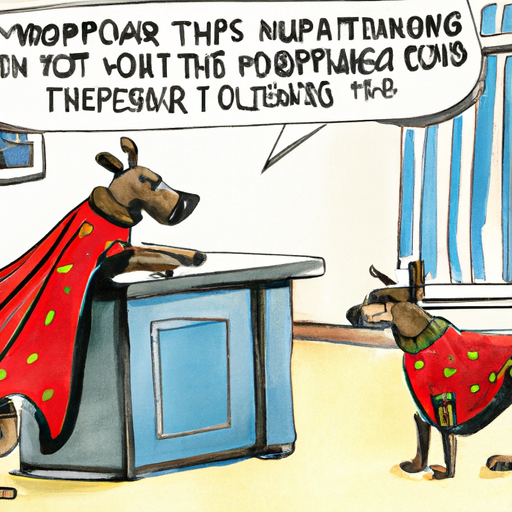Introduction
Hello there, caring pet parent! I know the struggle you’re experiencing – coming home to find your beloved furniture chewed to bits by your adventurous little furball. It’s important to understand that this isn’t a sign of defiance or disobedience, but rather a natural instinct and a way for dogs to explore the world around them. However, with the right strategies, you can divert this energy towards a more pet-friendly outlet. Let’s delve into these tactics, shall we?
Understand the Root Cause
Before we can address the problem, we need to understand why your dog is chewing on your furniture in the first place:
- Teething: Puppies, like human infants, go through a teething phase where their gums itch, and chewing on things relieves that discomfort.
- Boredom: If your dog isn’t getting enough physical or mental stimulation, they might take out their energy on your furniture.
- Anxiety: Dogs can suffer from separation anxiety or general nervousness, and chewing can be a coping mechanism for them.
By recognizing the root cause, you can tailor your approach to address the issue more effectively.
Training and Solutions
Once you understand why your dog is chewing, you can begin training them to stop. Here are some tried and true methods:
- Provide Chew Toys: These are great for teething puppies. Make sure to get a variety of textures and sizes to keep your dog interested.
- Increase Exercise: Walks, playtime, or even doggy daycare can help burn off excess energy and reduce boredom.
- Use a Deterrent Spray: There are sprays available that taste bitter to dogs but won’t harm your furniture.
Setting Up a Dog-Friendly Space
Consider creating a designated space for your dog with their own furniture and toys. This will give them a sense of ownership and reduce their desire to chew on your belongings. The table below outlines some considerations for setting up this space:
| Consideration | Explanation |
|---|---|
| Location | Choose a space that is easily accessible and comfortable for your dog. |
| Furniture | Include dog-friendly furniture pieces like pet beds or chew-proof mats. |
| Toys | Provide a variety of toys that cater to your dog’s needs and preferences. |
Dealing with Relapses
Remember, it’s normal for dogs to have slip ups during the training process. What’s important is how you respond. Avoid shouting or punishing your dog – this could make their anxiety worse. Instead, reinforce the training methods mentioned earlier and remember to reward good behavior.
Frequently Asked Questions
Q: How long does it take to train my dog to stop chewing furniture?
A: It varies depending on the dog. Consistency is key, so keep at it!
Q: What if the deterrent spray doesn’t work?
A: Not all dogs are deterred by the same things. Try a different brand, or consult with a professional trainer for more options.
Q: My dog is still chewing furniture despite everything. What do I do?
A: It might be time to consult with a professional dog trainer or a vet to rule out any underlying issues.
Remember, patience and consistency are your best friends during this process. With time and effort, you’ll soon come home to intact furniture and a happy, well-behaved pup.



